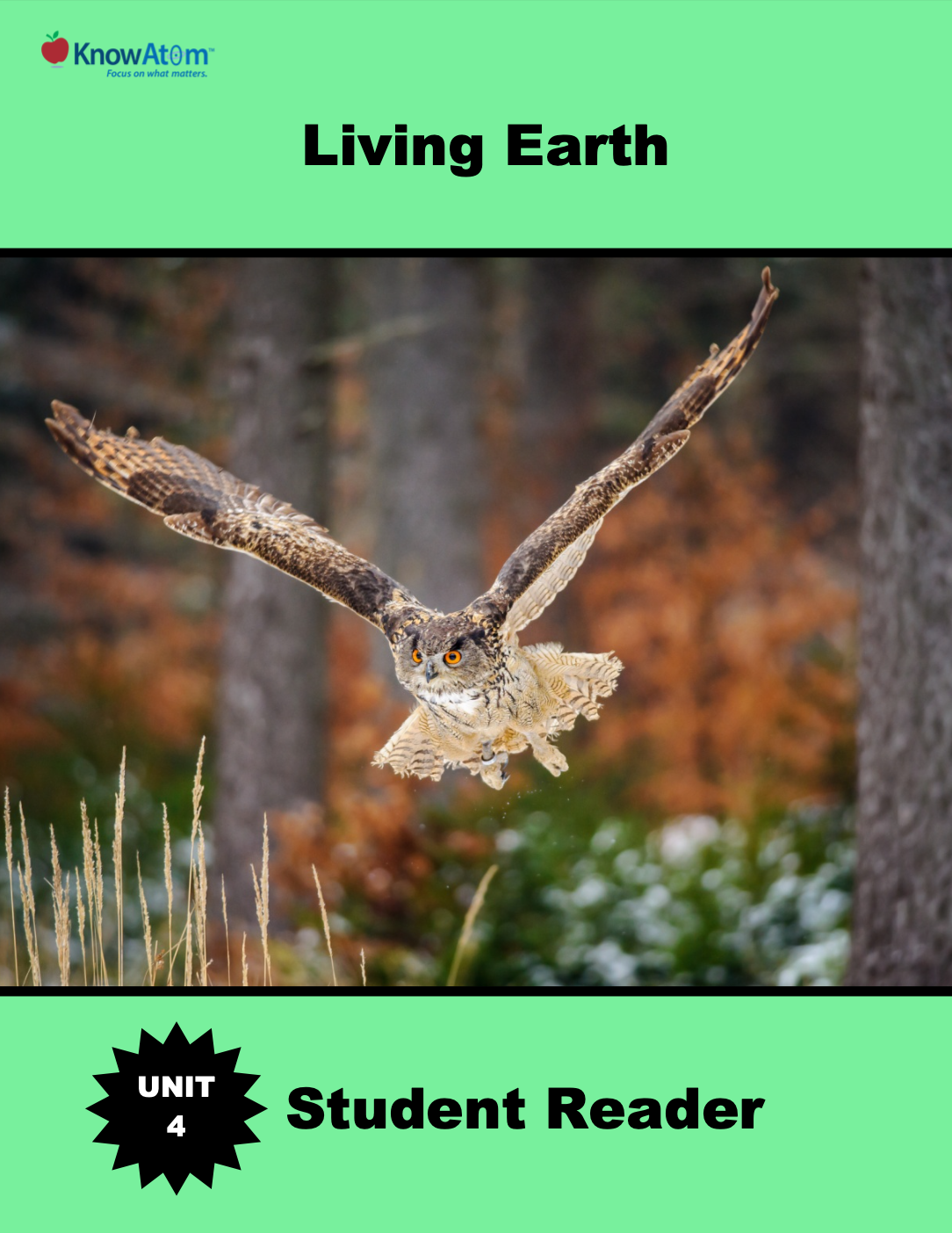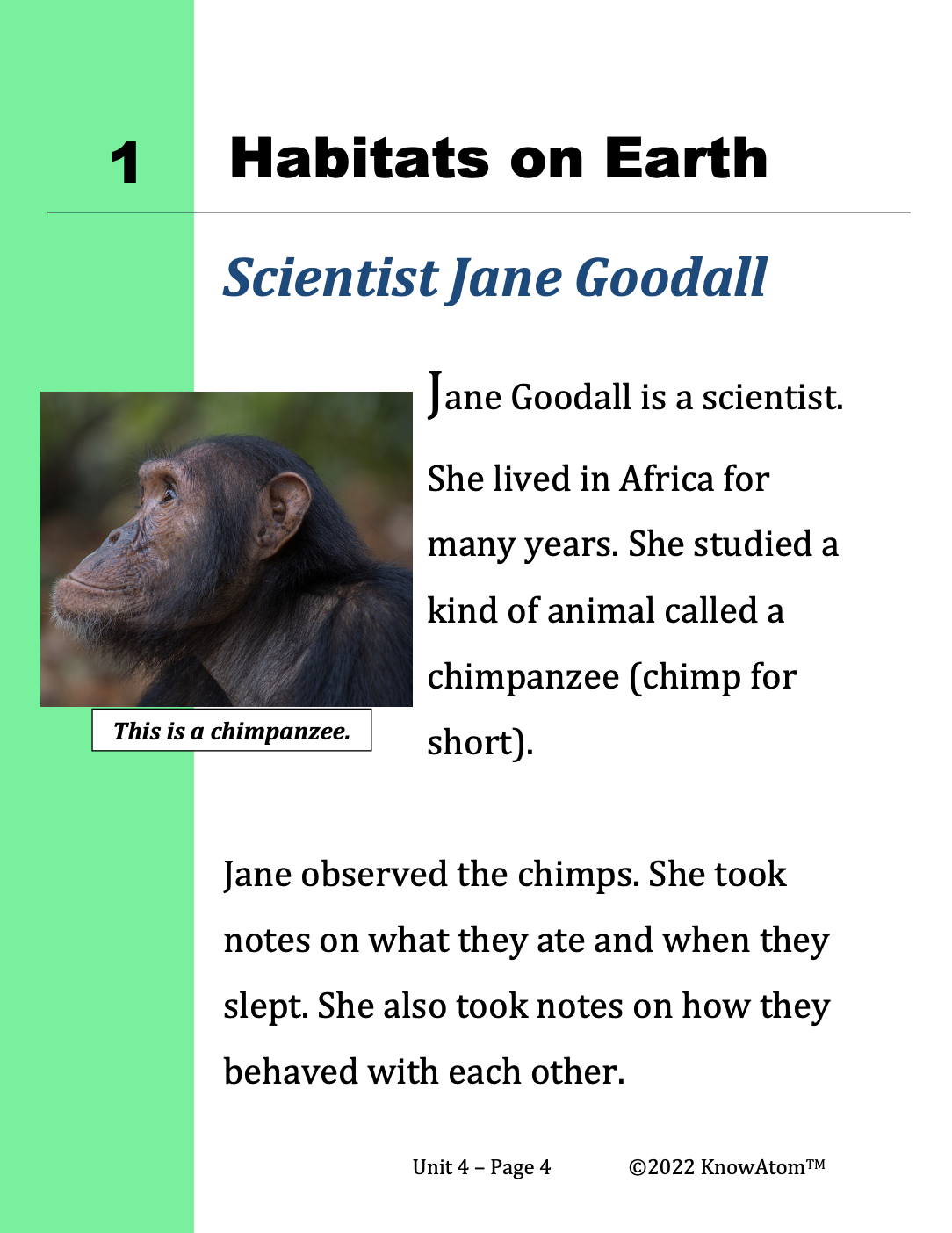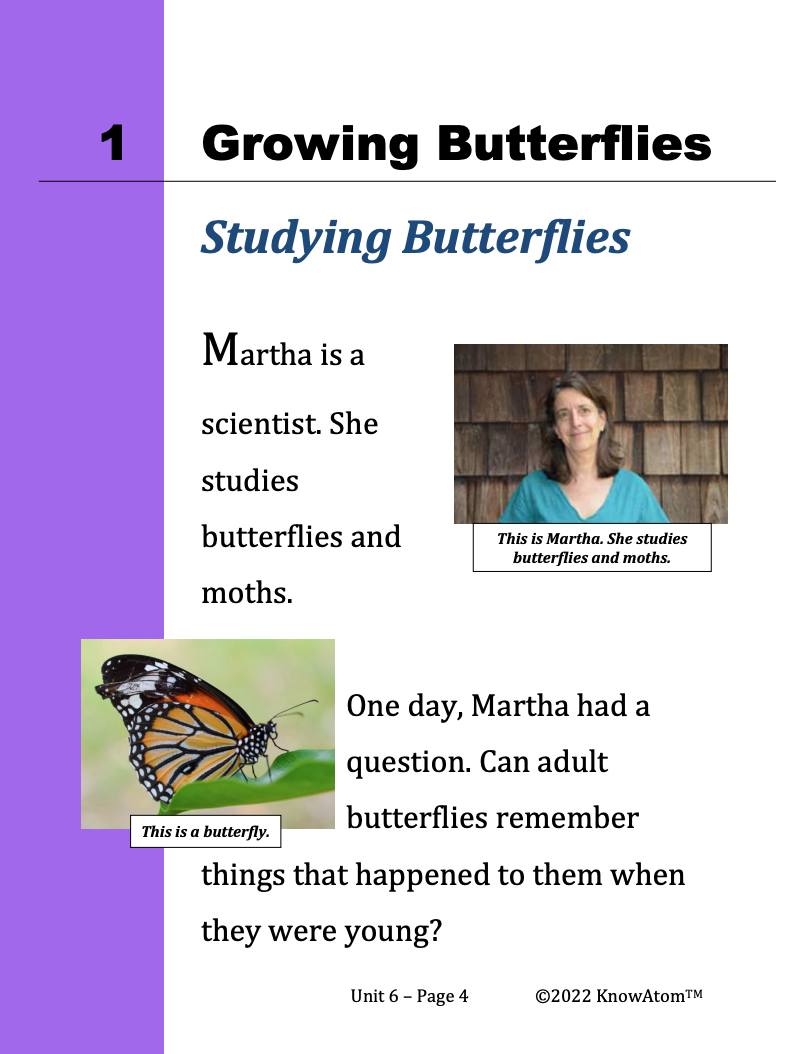
In the last unit, students explored patterns in land and water on Earth. They build on that knowledge in this unit with a focus on how living things are found in different habitats around the planet, and how living things depend on both living and nonliving components of their environment for survival.

This unit has students exploring animal habitat and predator-prey relationships. Once students model the living and nonliving parts of different habitats, they focus on how living things depend on other living things in their habitat for survival. As a class, students model the predator-prey relationship between foxes and rabbits in a forest habitat, and then dissect owl pellets to analyze a barn owl’s diet.

In this unit, students continue to learn about living things, focusing on animals. They begin by observing the metamorphosis of a butterfly and then model the parts of a butterfly that help it survive in its environment. This page highlights each component of lesson two in which students explore a butterfly’s body structure and function.
Standards citation: NGSS Lead States. 2013. Next Generation Science Standards: For States, By States. Washington, DC: The National Academies Press. Neither WestEd nor the lead states and partners that developed the Next Generation Science Standards were involved in the production of this product, and do not endorse it.
